 Your new post is loading...
 Your new post is loading...
Fresco is a lot like Uber. But unlike similar apps where you request a car, takeout, or a even a dog walker, Fresco puts a call out for a photojournalist. A newsroom posts a request for video of, say, a crime scene, and a Fresco user in the area can accept, take a video of it, and upload it to Fresco. If the news outlet uses it, the Fresco user gets paid $50.
TV news stations across the country are using the app, but Fresco is particularly appealing to KTBY, a station in Anchorage, Alaska. Alaska is a big state, and many of KTBY’s viewers live in remote villages that are hours away by plane. It’s hard to cover those communities without spending a ton of money and time. In a Fresco promotional video, Scott Centers, COO of Coastal Television Broadcasting Company, which owns KTBY, marvels that Fresco offers an affordable alternative.
As journalists continue to critique their coverage of the presidential election, Nieman Reports is publishing an ongoing series of articles exploring the issues, challenges and opportunities—from newsroom diversity to fake news to community news outlets—that will inform reporting going forward. The full list of articles is below.
All the discussion recently about the impact and reach of FAKE news is important, and I’m glad it’s being examined so deeply. Clearly that is part of the problem to be solved — but it’s only one part. I’m not letting REAL news off the hook. As someone who has deeply considered news nutrition, public engagement, and what makes our democracy function well (or not), here’s my diagnosis of what happened. The top 10 ingredients of a ‘Social Media Revolution Election’: Fragmented media consumption. People are consuming content on more screens in more forms than ever. Online, Text, Television, Video, Radio, On demand Audio/podcast, Social Media and via Search. Redundancy of mass media news content: dominated by the Eastern corridor-based perspectives (same people, same tone, same talking heads, same horse-race obsessions with various biases). Did you know that 6 companies drive what ~90% of Americans see from mass media sources? Commercial news as entertainment: pressures of the bottom line and disruption, translate to a focus on stories and coverage that drives clicks and views to generate higher advertising revenue. Lack of inclusion in the news: diverse races, gender, geographic locations, etc. are not seeing themselves in the news or are shown in highly stereotypical ways (which creates a distortion of reality). These audiences thus seek more relevant and relate-able alternatives, while the people who remain to consume mass media are not getting the full story. This leads decreasing knowledge and an overall lack of connection and empathy....
Since Election Day, President-elect Donald J. Trump has proposed a U-turn in American diplomatic relations with Cuba, boasted about negotiations with a major manufacturer, trumpeted false claims about millions of illegal votes and hinted that he might upend current free speech laws by banning flag burning.
All in 140 characters or less.
As news organizations grapple with covering a commander in chief unlike any other, Mr. Trump’s Twitter account — a bully pulpit, propaganda weapon and attention magnet all rolled into one — has quickly emerged as a fresh journalistic challenge and a source of lively debate.
How to cover a president’s pronouncements when they are both provocative and maddeningly vague? Does an early-morning tweet amount to a planned shift in American policy? Should news outlets, as some readers argue, ignore clearly untrue tweets, rather than amplify falsehoods further?...
Since Tuesday’s election, there’s been a lot of finger pointing, and many of those fingers are pointing at Facebook, arguing that their newsfeed algorithms played a major role in spreading misinformation and magnifying polarization. Some of the articles are thoughtful in their criticism, others thoughtful in their defense of Facebook, while others are full of the very misinformation and polarization that they hope will get them to the top of everyone’s newsfeed. But all of them seem to me to make a fundamental error in how they are thinking about media in the age of algorithms. Consider Jessica Lessin’s argument in The Information: "I am deeply, deeply worried about the calls I am hearing, from journalists and friends, for Facebook to intervene and accept responsibility for ensuring citizens are well-informed and getting a balanced perspective…. Facebook promoting trustworthiness sounds great. Who isn’t in favor of accepting responsibility and ferreting out misinformation? But major moves on Facebook’s part to mediate good information from bad information would put the company in the impossible position of having to determine “truth,” which seems far more objective than it really is. Moreover, it would be bad for society.” My response: Facebook crossed this river long ago. Once they got into the business of curating the newsfeed rather than simply treating it as a timeline, they put themselves in the position of mediating what people are going to see. They became a gatekeeper and a guide. This is not an impossible position. It’s their job. So they’d better make a priority of being good at it....
Pew Research tracks all kinds of media data but two recent facts stand out:
Only 18% of the public have “A lot” of trust in the information provided by “national news organizations.”
Understandably, only 4% of the public have “A lot” of trust in the information provided by social media.
Media credibility will continue to drop like a hot potato from the top of Trump Tower....
Some 23 per cent of news articles contain a social media embed, and 10 per cent of these embeds have either been modified or removed by their author since the article's publication, shows a report released today by SAM.
Social media curation platform SAM analysed one million web pages using its Report Card tool, focusing on North American news sites such as New York Daily News, Fox News, Vox, CNN or Forbes, to find out more about the role social media plays in newsgathering today.
The Report Card is available for free and enables publishers to find out how many social media embeds are currently on their websites and whether they have broken or they have been edited since publication....
The 18-24 crowd has used the internet as its primary source for news for several years. Now it is specifying “social media” as its main source of news, with that niche overtaking television for the first time. The information comes from a study done by The Oxford University Reuters Institute for the Study of Journalism. It looked at consumers of news and information around the world for its “Reuters Institute Digital News Report 2016.” This is the fifth year it has issued such a report. It’s a fascinating read. 28 percent of 18-24 year-olds say social media is their main source of news, compared to 24 percent who cite television. Since 2013, the number of people in the US who say they get their news from social media has doubled—46 percent now use social media for news....
“We really hit a landmark this year,” Newman told the audience, highlighting how – for the first time – more than half of the DNR sample now uses social media for news each week. In tracking this trend, we’ve seen “enormous growth in most markets since 2013,” he added. Key stats: - 51% use social media for news each week.
- 12% say social media is their main news source.
- More 18-24s now prefer social media (28%), as a news source, to TV news (24%).
- 44% of the DNR sample uses Facebook for news each week.
Facebook’s news reach is more than double its nearest rival, You Tube (19%), although the video network plays a prominent news role in some countries. Twitter (10%) meanwhile has an impact due to its popularity with heavy news users and influencers....
Juan Andres Muñoz was in his bedroom when he first tweeted news of Osama Bin Laden’s death to hundreds of thousands of followers of CNN’s Spanish language network, CNN en Español.“ I remember I was at home, and back at that time we didn’t have a lot of people working on social – I was doing a lot of the tweeting myself. I saw emails coming in, and everything indicated that it would be a big big story. As soon as it was confirmed by CNN, I tweeted immediately from the main CNN en Español account.“ I tweeted that from my room. It went all around the Spanish-speaking world, and ended up being one of the three biggest breaking news tweets on the event.” That experience confirmed to Juan just how effective social media could be in spreading news and information....
From LocalLabs to GoLocal24 to Everyblock, hyper-local news startups have consistently collided with foreboding economics: Narrow audiences tend to be small audiences, and small audiences are hard to monetize. But Ripple founder and CEO Razmig Hovaghimian, who previously made splashes with Embrace and Viki, thinks his latest project could build a more successful business model for hyper-local news — and several heavyweight funders are buying in. "I want [Ripple] to be a platform where storytellers get not only recognition and satisfaction from it, but compensation as well." -Razmig Hovaghimian EarlIer this month, Hovaghimian and his six-person team launched Ripple, a hyper-local news app that uses geo-location technology to help users discover the stories closest to them. Backed by Greylock Partners, Knight Foundation, MIT Media Lab director Joi Ito and other funders, Ripple has now launched in ten cities, including San Francisco and New York, and Hovaghimian says more locations are coming soon. source of enthusiasm for Ripple is two-fold: First, by combining geo-mapping technology with a voting system that allows stories to “ripple out” to a wider audience, Ripple creates an opportunity to produce hyper-local news at scale — a big step toward business viability....
Facebook and Twitter are increasingly becoming news sources for its users, but news is not necessarily the reason why people are logging onto these social networking sites. It just so happens that news ends up being part of the social media experience. That’s according to a new report from the Pew Research Center. "One of the things we saw early on is the degree to which people describe this as 'incidental news...And that's something that's being reinforced." -- Amy Mitchell, director of journalism research for the Pew Research Center The findings cement the fact that both users and news organizations must continue to wrestle with social media, its different features and their implications. “Social media is certainly a part of Americans’ news streams, and it’s going to continue to be a part of that,” said Amy Mitchell, director of journalism research for the Pew Research Center. “And the different ways people connect with these platforms will influence how they learn about their communities and the world.”...
Local daily newspaper reporter?
How soon will we have to add this once-stable occupation to the list of jobs that once were — occupations once numerous that slid into obsolescence? (Not to mention the even more colorful spittleman [hospital attendant], rotarius [wheelwright], and hamberghmaker [horse collar maker].)
In this morning’s released annual census, the American Society of News Editors found its first double-digit decline in newsroom count since the Great Recession of seven years ago. Newsroom jobs dropped 10.4 percent — down to 32,900 full-time journalists at nearly 1,400 U.S. dailies, 2014 over 2013. That’s the loss of 3,800 jobs in just one year. (Detailed table at bottom of this column.)...
|
American news consumers are slightly more likely to access digital news through an organization’s website or app than they are to get it through social media, according to a recent Pew Center analysis. Thirty-six percent of consumers said they received digital news from an organization’s website or app, while 35 percent said they got it through social media. Twenty percent received news via a search engine; 15 percent received it through emails, texts or alerts from a news organizations; and seven percent got it through an email or text from family members or friends. One of the most notable findings of the analysis is that news consumers are more likely to remember the name of the news organization from which a story came if they followed a link from an email, text or other alert from the organization. The average rate for recall was 78 percent. The rate was 52 percent if the link came from social media and 50 percent if it came from a family member or friend through email or text....
Each month, MediaShift posts a chart from Storyclash ranking publishers and news stories that get the most social media interactions. Storyclash regularly publishes rankings of Social Media Trends, covering online articles with the most social media interactions on Facebook and Google+.
The top story of the year according to analysis from Storyclash wasn’t the election. It was the moon. The November supermoon got publisher ScienceAlert 2.8 interactions and beat out stories about Hillary Clinton, Donald Trump and Queen. Below is the full list of the top social news in 2016 from Storyclash....
More bad news about fake news: A new survey from Morning Consult finds more than 70% of Americans have heard about the “fake news” controversy, and nearly half (49%) say they have been exposed to fake news at least once a day through Facebook and Twitter.
In addition, 69% of those polled said they have started to read a news story only to realize later that it wasn’t real.
On the question of whether Facebook, Twitter, and Google should be able to censor fake news, a majority of Americans say they are comfortable with tech companies censoring fake news — 71% said it was appropriate for Google, Facebook and Twitter to remove fake news, and 67% said it was appropriate for Web service providers to remove it.
With regard to who is most responsible for policing fake news, Americans think they and social media sites are most responsible for policing fake news, but believe all actors must play a role. For example, 24% of Americans said "the person reading the news" is the most responsible for ensuring they are not exposed, followed by Facebook and Twitter at 17%. The government comes in third with 14% of the vote, followed by Web services providers at 10%, and search engines (such as Google) at 9%.
If you thought you heard the last on fake news, you were sadly mistaken.
A Stanford study found that the majority of middle school students can’t tell the difference between real news and fake news. In fact, 82 percent couldn’t distinguish between a real news story on a website and a “sponsored content” post.
Of the 8,704 students studied (ranging in age from middle school to college level), four in ten high-school students believed that the region near Japan’s Fukushima nuclear plant was toxic after seeing an unsourced photo of deformed daisies coupled with a headline about the Japanese area. The photo, keep in mind, had no source or location attribution. Meanwhile, two out of every three middle-schoolers were fooled by an article on financial preparedness penned by a bank executive.
It seems that those surveyed in the study were judging validity of news on Twitter based on the amount of detail in the tweet and whether or not a large photo was attached, rather than focusing on the source of the tweet.
The WSJ, which first reported on the study, says that a big part of solving this problem among young people comes down to education, both at school and at home....
Try to imagine getting the latest news by chatbot? If you can think it, you can ask for breaking news from CNN using Amazon Echo. That’s right. It’s the latest news brought to you by CNN chatbot. CNN launches chatbot news CNN has done a great job of delivering the news on TV and new social media channels. In fact, it has a 40-person dedicated digital team ready to deliver chatbot news according to a Lost Remote post by Max Willens:...
Digital news continues to evolve, pushed by a variety of innovations in recent years, from groundbreaking new technologies like virtual reality and automated reporting to experiments on social platforms that have altered campaign coverage. As journalists and media practitioners gather for the annual Online News Association Conference, here are 10 key findings from recent Pew Research Center surveys and analyses that show how these rapid digital shifts are reshaping Americans’ news habits...
Barely two days after changes to its Trending Topics section, a fake article about Fox News anchor Megyn Kelly began trending on Facebook — before entirely disappearing on Monday morning. The incident came on the heels of Facebook’s announcement on Friday that human curators will no longer write the short descriptions that accompany trending topics on the site. Its trending news team was then shown the door. The Trending Topics section has been shrouded in controversy since May, when a Gizmodo report alleged an inherent bias in its prioritization of news articles, which also triggered a Congressional investigation as well as an internal Facebook investigation. The changes, clearly, are not devoid of problems. For our latest Digiday Confessions, we talked to a member of the now-defunct trending news team at Facebook, who reflected on the recent developments as well as time spent working on the team. Digiday has also reached out to Facebook for comment but has not yet received a response....
The New York Times has embarked on a new form of storytelling to enhance its coverage of the Summer Olympics: Two-way text-messaging.
For two weeks, deputy sports editor Sam Manchester will be sending text messages from the Olympic Games in Rio to readers who sign up for the service.
Unlike email alerts or push notifications, these texts will give readers an informal, behind-the-scenes look at the Games, almost as if they had a friend texting them directly. Readers can also write back to Manchester. And while he won't be able to reply to each message, the responses can be used to personalize each reader's experience.
The innovation is an effort to reach readers on the platforms that are central to their lives, Andrew Phelps, the Times' Director of Personalization, told CNNMoney....
A new report from Pew Research Center shows an increase in the number of people in the United States getting their news from social media platforms. The report revealed that more than 62 percent said they get news on social media, which is about a 13 percent increase since 2012.OK, what else is new? Facebook is becoming more like Twitter as a news source.That might be your reaction to what is already a clear trend of people turning to social media for their news. But what does that mean for media outlets? We dig into the numbers here to translate them into actionable insights....
No need to seek out the news. Today, we can just click around on cat videos and find it by accident. A poll released Thursday by the Pew Research Center found that a majority of Americans (62%) now get news from social media. That includes 66% of Facebook FB -0.10% users — a big deal because more than two-thirds of Americans are on Facebook. The math works out to about 44% of all Americans getting news from Facebook. It’s a number that could scare users angered by the recent censorship controversy. In early May, a staffer accused Facebook of preventing conservative stories from appearing in the small Trending Topics section that appears to the right of the main News Feed column. Facebook has denied it has a bias, but that hasn’t stopped the conservative backlash. Liberals, too, have complained about the power that Facebook has over the news media. Well, it turns out that that social media does have a lot of influence when it comes to how people get their news. It’s not just Facebook. On Reddit and Twitter TWTR +5.59%, 70% and 59% of users, respectively, say they use their networks to find news....
“We want most of all to enrich man’s spirit,” Johnson said.
Johnson’s words in launching the Corporation for Public Broadcasting set the tone for a discussion on public media in today’s digital world at Knight Foundation’s Media Learning Seminar.
“That’s a little bit of the role we have today in thinking about what is public media’s role in enriching man and women’s spirit in our country, and ensuring a thriving and informed democracy,” said Knight Foundation’s Vice President for Media Innovation John Bracken kicking off the conversation with representatives of NPR, Detroit’s WDET and St. Louis Public Radio.
While public media continues to be guided by the spirit of Johnson’s remarks, the digital age has brought huge changes to the kind of information people want and the way they access it, pushing news organizations to meet new information demands, the panel agreed. Yet while Americans are inundated with news and content, “it’s not true that all our information needs are met,” said Mike Oreskes, senior vice president, news, and editorial director at NPR.
The biggest unmet need is in local journalism, he said....
Figures released by the publication show that its social media following has grown by 44% over the last year to a total of 35.6 million. The Economist claimed this is more than any other major media brand except for The New York Times.
The Economist’s Twitter followers increased 64% to 15.7 million year-on-year between July and December 2015, while its Facebook likes grew 25% to 7.6 million and its LinkedIn group members increased by 222% to 1.4 million over the same period.
In 2015 the brand saw a 13% year-on-year rise in gross profit from its circulation business, which in part was due to culling discounted copies and attracting more subscribers who paid a premium for a bundle of print and digital editions. However, the brand’s social channels have also been a “critical component”, according to Michael Brunt, chief marketing officer and managing director of circulation at The Economist....
|
 Your new post is loading...
Your new post is loading...
 Your new post is loading...
Your new post is loading...







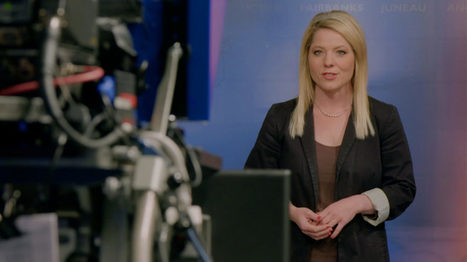





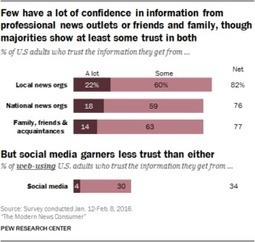

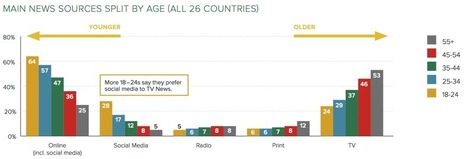
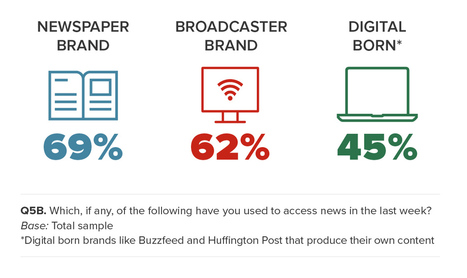

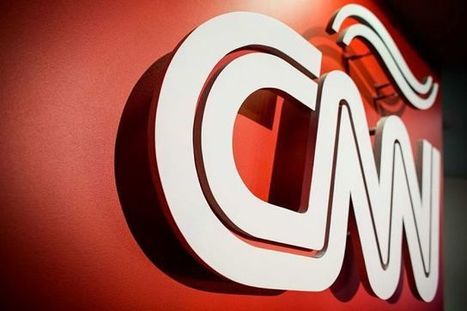
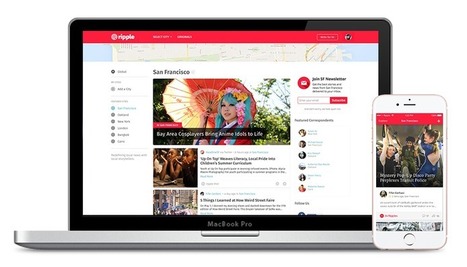
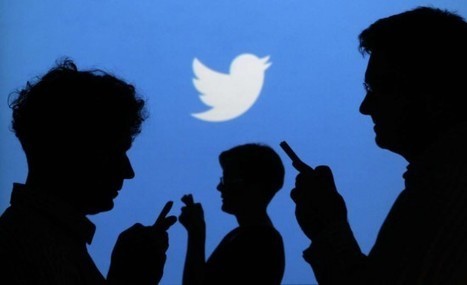







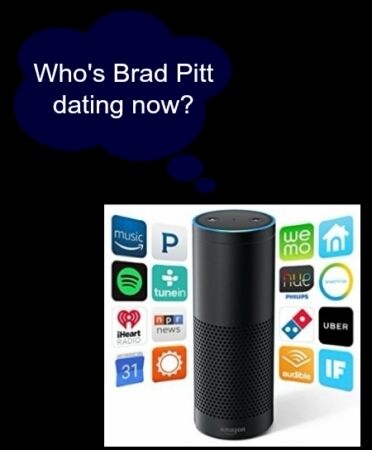



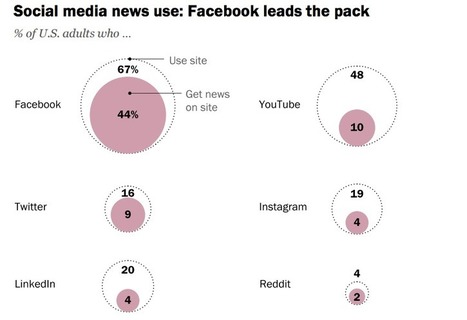







Cue and pay the citizen journalists.